Begonias are one of my favorite plants. Even when they are not in bloom many of the varieties
have lovely interesting foliage. They are easy to grow if given the proper environment and will live for many years.
The most common begonia we see for sale in the spring is the Fibrous or Wax Begonia.
These compact little plants are at most a foot high and they will provide almost continuous blooms in full sun or partial shade
all year long in our area if provided protection from frost or freeze. The flowers come in various shades of red, pink, or
white. The shiny, succulent leaves are green, variegated, or bronze-colored. Bronze-leaved begonias will stand up to full
sun locations better than the others. Be cautious to plant them in a well drained location.
compact little plants are at most a foot high and they will provide almost continuous blooms in full sun or partial shade
all year long in our area if provided protection from frost or freeze. The flowers come in various shades of red, pink, or
white. The shiny, succulent leaves are green, variegated, or bronze-colored. Bronze-leaved begonias will stand up to full
sun locations better than the others. Be cautious to plant them in a well drained location.
Another begonia variety that does well in our area is the durable 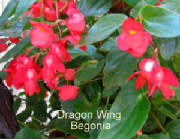 Dragon Wing. This easy-care begonia is self-cleaning, meaning the old blooms make way for new ones. It
continues to bloom without having to pinch off the old flowers. I have had one plant in a pot for three years and I
find that it is most spectacular during the fall into spring. It still blooms during the summer, but not as profusely.
This variety needs a good source of fertilizer, so use a liquid fertilizer diluted to one half strength every other time you
water to keep them looking healthy. The plant grows two to three feet tall, with tall arching canes and 5 inch long,
glossy, deep green leaves and red or pink blooms. It will grow well in the sun during the winter and in the shade during the
hot summer months.
Dragon Wing. This easy-care begonia is self-cleaning, meaning the old blooms make way for new ones. It
continues to bloom without having to pinch off the old flowers. I have had one plant in a pot for three years and I
find that it is most spectacular during the fall into spring. It still blooms during the summer, but not as profusely.
This variety needs a good source of fertilizer, so use a liquid fertilizer diluted to one half strength every other time you
water to keep them looking healthy. The plant grows two to three feet tall, with tall arching canes and 5 inch long,
glossy, deep green leaves and red or pink blooms. It will grow well in the sun during the winter and in the shade during the
hot summer months.
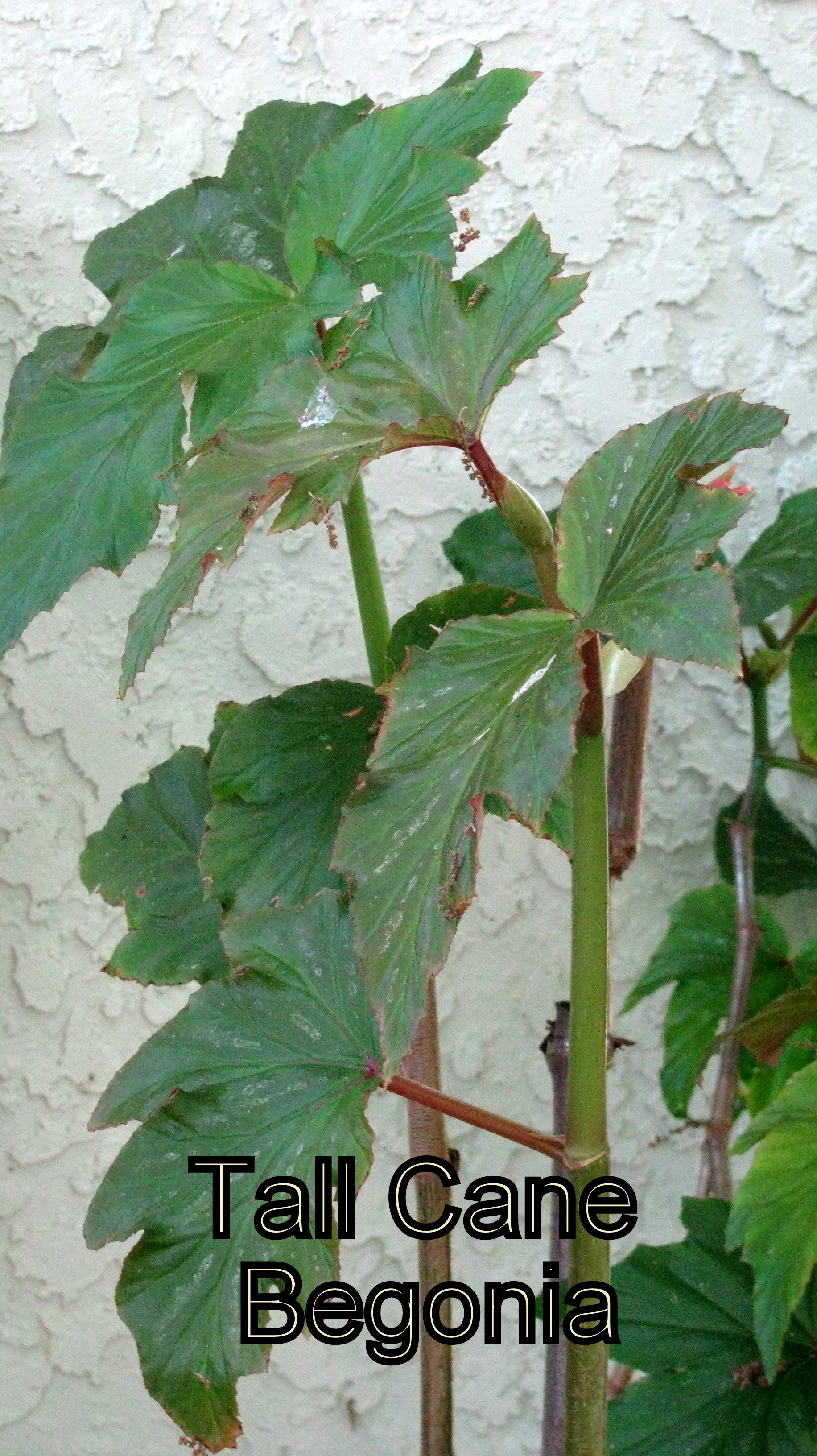 Other begonias are grown primarily for their spectacular foliage. Angle Wing or Cane Begonias
get their name from the shape of their leaves and the tall cane growth habit that grows upward on one stem. They flower and
Other begonias are grown primarily for their spectacular foliage. Angle Wing or Cane Begonias
get their name from the shape of their leaves and the tall cane growth habit that grows upward on one stem. They flower and produce blooms that range in color from red to white. The top of the leaf is often a dark green with metallic silver specks
while the underside can be green or a deep red. Since cane begonias are native to the tropics, our climate provides
the ideal growing conditions of high humidity, a lot of water, and a lot of light. Provide shade during the direct mid-day
sun or the leaves can burn.
produce blooms that range in color from red to white. The top of the leaf is often a dark green with metallic silver specks
while the underside can be green or a deep red. Since cane begonias are native to the tropics, our climate provides
the ideal growing conditions of high humidity, a lot of water, and a lot of light. Provide shade during the direct mid-day
sun or the leaves can burn.
Rex Begonias are rhizomatous begonias
that are not grown for their flowers, but for their beautiful leaves. The leaves can contain a variety of green, red, pink,
silver, gray, lavender and a maroon. These spectacular begonias grow best in containers in part-shade in rich, moist, well-drained
soil during our cool, dry winter months. They start to decline once the hot humid warm weather returns. Bringing
them inside to a bright window during the summer can help keep them alive, or you can just treat them as annuals.
 Some of the other Rhizomatous Begonias will survive our summers better than the Rex variety
if they are grown in protected shade. But you just have to experiment with them. I have had plants that grow well
for several years, then, all at once they die.
Some of the other Rhizomatous Begonias will survive our summers better than the Rex variety
if they are grown in protected shade. But you just have to experiment with them. I have had plants that grow well
for several years, then, all at once they die.
Another popular begonia is the Tuberous
Begonia. These have lovely large blooms on very brittle stems. You will sometimes see these for sale
this time of year, but I have found it is best to forgo them since our climate is not kind to them. Try some of the
more hardy begonias instead.
March heralds spring here in Central Florida and it is time for
those gardening tasks that get our landscapes ready for much warmer weather. We did not have a lot of really cold weather
this year, so the clean-up of frost and freeze damaged plants is not as daunting as in the last couple of years.
Pruning:
Many of the plants that were damaged by cold are now sprouting new growth. You can prune back to this healthy
growth to rejuvenate these plants. If you have shrubs or hedges that have grown too tall or large for the space they
are in, now is the time for some drastic pruning to bring them down to size. Viburnum and Ligustrum can be pruned back
by 1/3 to ½ now. This is also true for dwarf Yaupon hollies. Some plants that look dead may still sprout
from the roots- look closely at ground level for new sprouts and prune back to this level. Also, if you did not prune your
roses, do so now.
Fertilizing:
Lawn grasses should receive their first application of fertilizer this
month. Be sure to use one that has 50% or more slow release nitrogen - a fertilizer with a formula of 15-0-15 is good
for lawns. Shrubs, palms and other ornamental plants can be fertilized now with a 100% slow release formula of 8-0-12
that also contains minor nutrients. Palms especially need this type of fertilizer to ward off nutrient deficiencies.
A complete fertilizer schedule of March 1, May 31 and October 1 will keep you within the Pinellas County Nitrogen and Phosphorus
fertilizer ban from June 1 - September 30. Nitrogen is the first number in the formula on the fertilizer bag and Phosphorus
is the second number. It is best not to apply fertilizer if a heavy rain is forecast in the next 24 hours. For
more information on Pinellas County's fertilizer ordinance, go to: http://www.pinellascounty.org/environment/pdfs/Fertilizer-Ordinance-Summary.pdf
Vegetables:
If you are planning to grow some veggies this spring, those that can be planted now include: beans, corn, cucumbers,
eggplant, peppers, summer squash, tomatoes and watermelon. Those of us living near conservation areas or Brooker Creek
Preserve have a real problem with critters eating veggies. I grow tomatoes, peppers, beans, chard, broccoli, and eggplant
in pots inside my pool screen enclosure quite successfully. Veggies like cucumbers and squash that need a pollinator
to move pollen from male to female flowers do not work inside the screen unless you want to become the pollinator with a small
artists paint brush. For more information on growing vegetables, go to: http://edis.ifas.ufl.edu/pdffiles/VH/VH02100.pdf
Other chores:
Give your winter annuals, such as snapdragons, petunias, pansies or geraniums, a light pruning and balanced slow
release fertilizer. You should see a new flush of bloom that lasts into May.
Disinfected pruning tools after each use by dipping the cutting surfaces in a solution of one part bleach to nine
parts water or rubbing alcohol (70%) from the drug store (does not require diluting). If you have a lawn service that
does your pruning, ask that they disinfect their tools prior to using them in your yard.
Add a fresh layer of mulch once all spring clean-up has been completed. Be careful to keep the mulch a couple
of inches away from the base of plants and not more than two to three inches deep. You do not need to remove old mulch,
just add the fresh mulch to the top. The old mulch will continue to decay and add needed organic nutrients to the soil.
And lastly, don't be tempted to scalp the lawn to remove the grass that
has turned brown. You can damage the lawn by removing living growing points that are protected by the brown grass blades.
Those brown blades will decay back into the soil.
I want to also share with
you some pictures of whats going on in my landscape. I have veggies in pots that are very productive.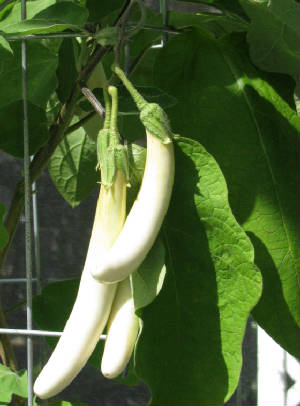
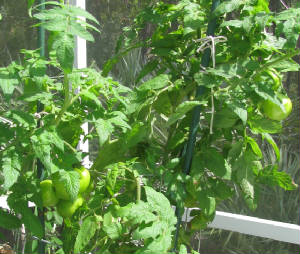
Tomatoes
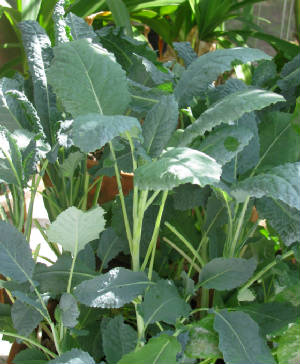
Eggplant

Lacinato Kale
Baby Beets
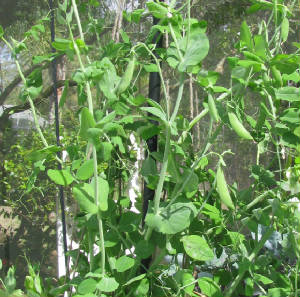
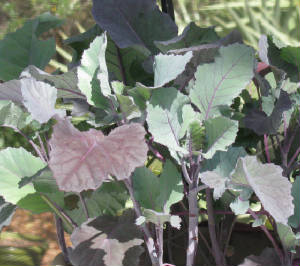
Sugar Snap Peas
Kholrabi
I also have more orchids in bloom this year than I have ever had.
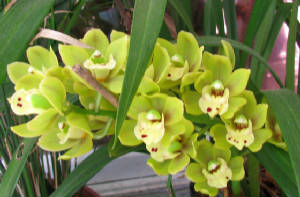
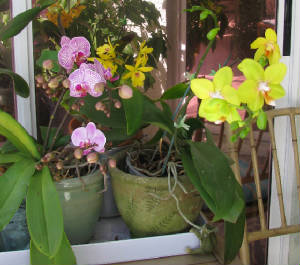
And the unusual warm winter has caused my Caladiums
to sprout very early. They usually do not peak out of the ground until about mid April.
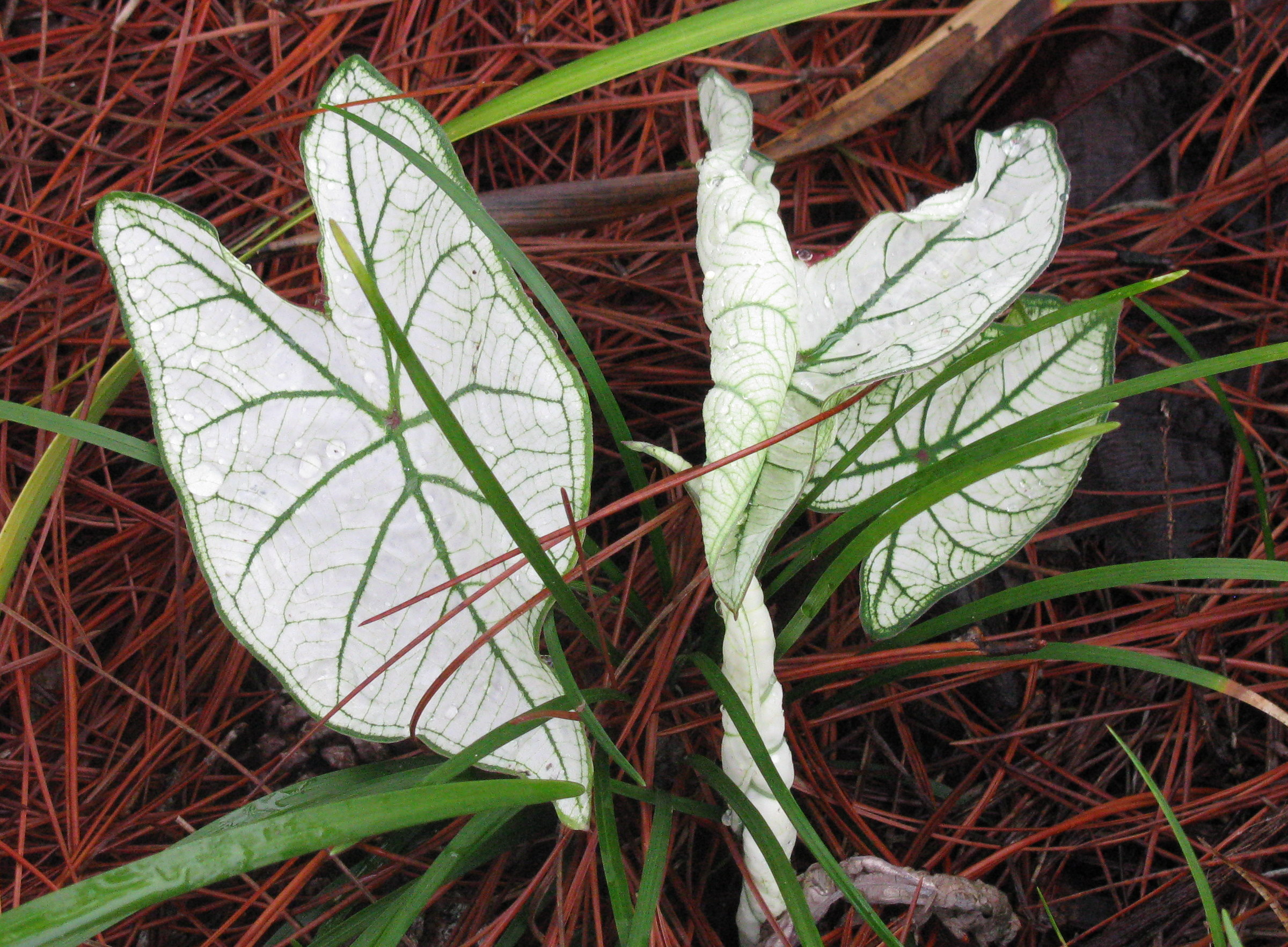 And, my Amarylis are starting to bloom.
And, my Amarylis are starting to bloom.
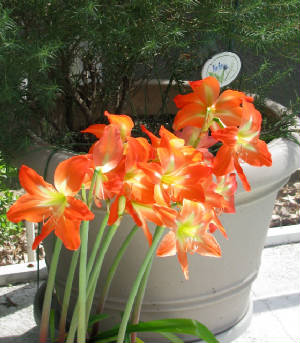
I hope that you are experiencing an early colorful spring as well.
Happy Gardening!

